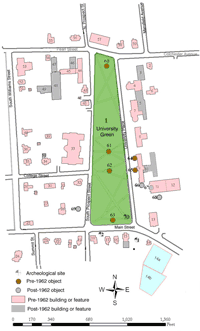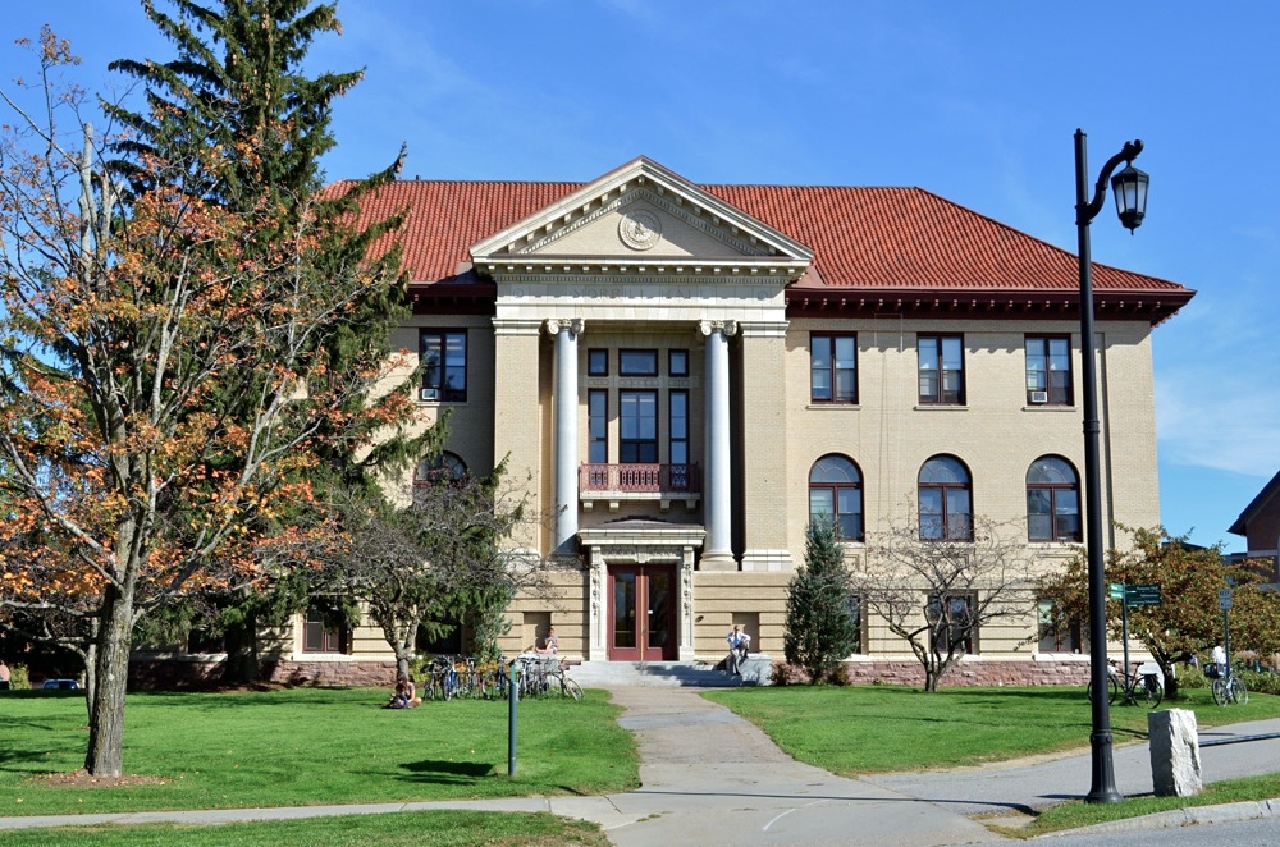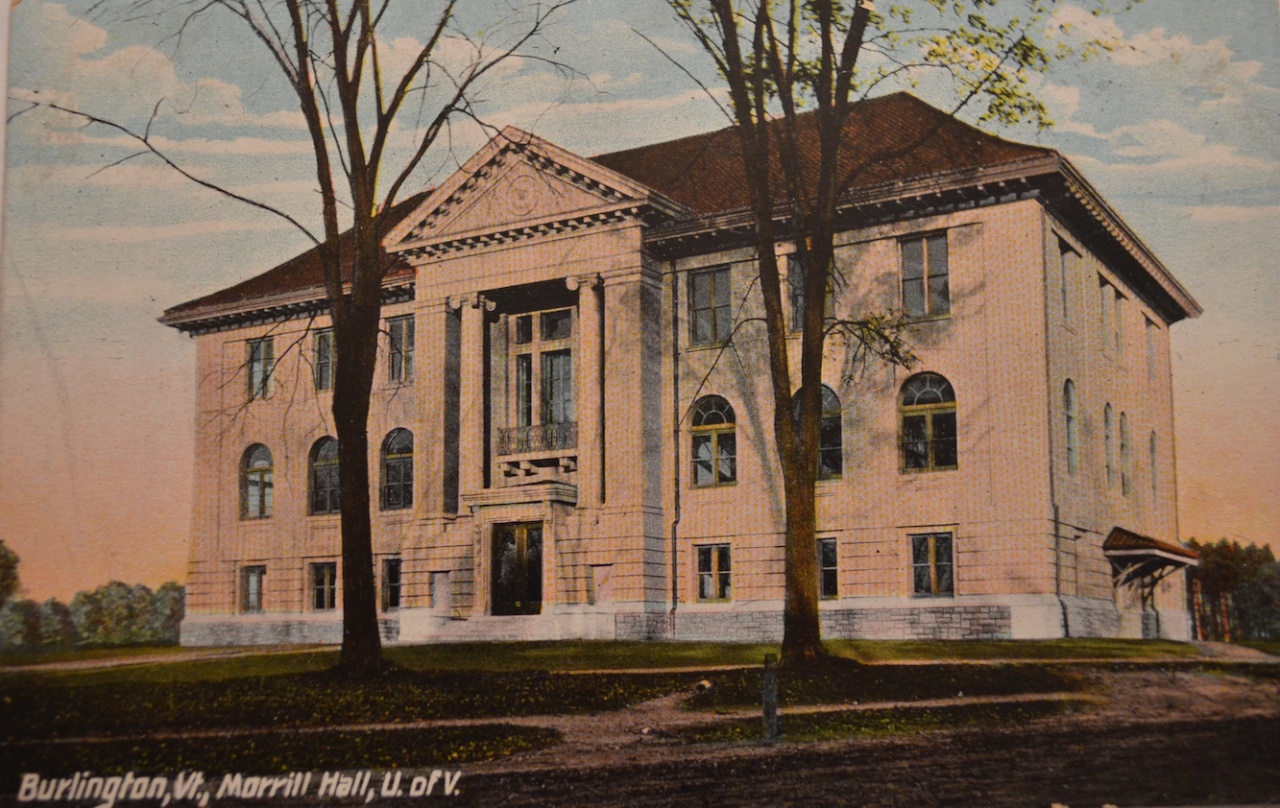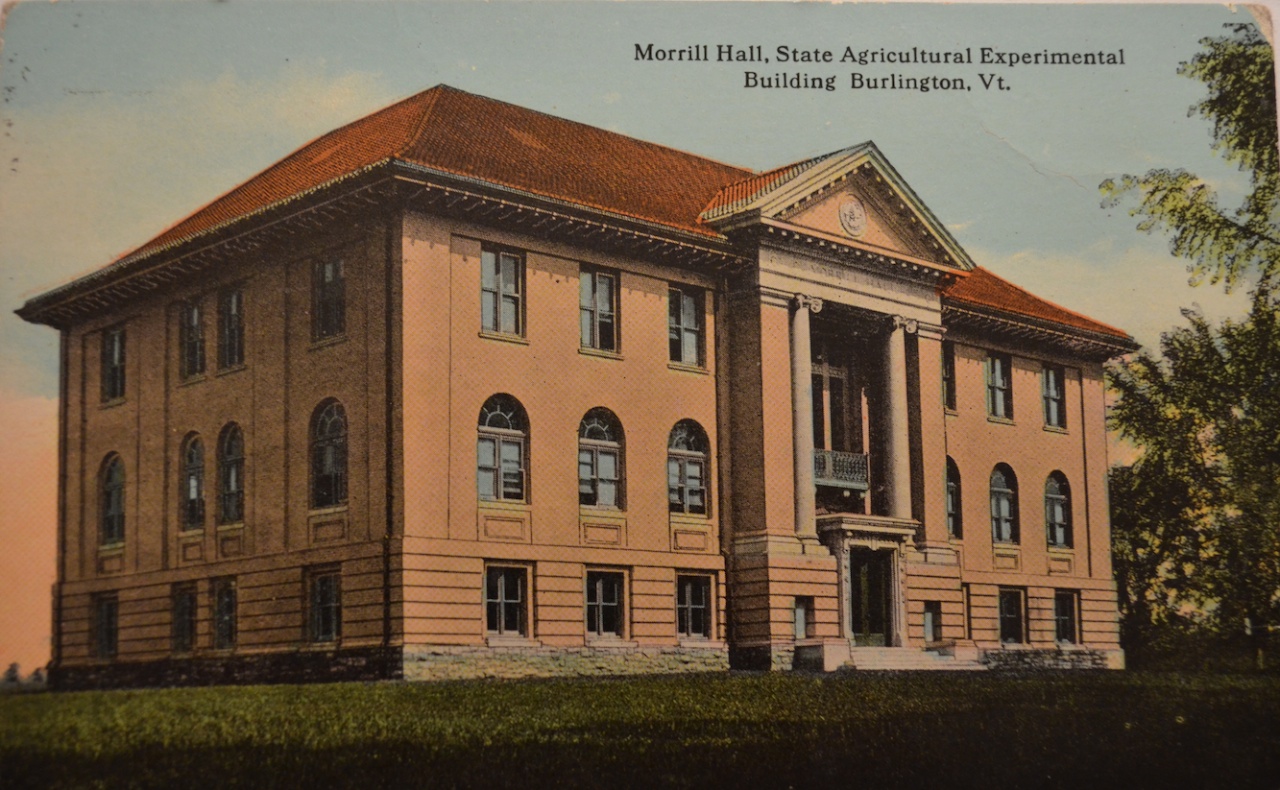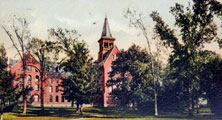 |
University Green Area Heritage StudyHistoric Burlington Research Project - HP 206Historic Preservation Program - University of Vermont |
Morrill Hall - 146 University Place
Morrill Hall. Photograph by Melissa Smith (October 16, 2011) In consecutive Reports of the Trustees of the University of Vermont, dating from 1894 through 1904, the State Agricultural College outlined its continuing need for a building devoted strictly to agricultural studies. The facilities at the University of Vermont had become inadequate, particularly in regards to the Dairy School, as the 1899-1900 Trustee Report explains, “Every year more students apply than can be admitted and every year more are admitted than can be taught properly in the overcrowded rooms.”(1) Their plight was further frustrated by the fact that the University of Vermont had taken on the State Agricultural College as a part of the Morrill Act of 1862.(2) The land grant did not provide for building maintenance or funding for new construction and as such the Trustees looked to the General Assembly of the State of Vermont for funding. (3) Finally in 1904, the General Assembly passed Act 53, which provided $60,000 to the University to build an adequate facility and for the equipment needed to support the Agricultural Department of the University of Vermont and State Agricultural College.(4) The Act also designated that the building was to be named after Senator Morrill, a University trustee and author of the Morrill Act that provided the land grant for the State Agricultural College at the University of Vermont.(5) It was not until 1906 that the corner stone was laid.(6) This delay was due to a lengthy search for an appropriate site.(7) The University was able to purchase the Allen Homestead at the corner of University Place and Main Street, which encompassed 22 acres. (8) A barn on the property was demolished, but the house was moved to its current location at 590 Main Street, near the student-crossing tunnel.(9) The corner stone ceremony coincided with commencement exercises in June of 1906.(10) Of particular note, Miss Bertha Hills, daughter of Professor J. L. Hills, dean of the Agricultural Department, provided a copper box with “…a current catalogue of the University of Vermont and State Agricultural College, Acts of Congress and of State Legislature relating to the agricultural colleges and experiment stations, Morrill Bills of 1862 and 1890, the Hatch Act of 1887, the Adams Act of 1906, copies of the eighteenth report Vermont Experiment station, current report Vermont State board of agriculture, current report Vermont Dairymen’s association, current issues of local papers and copies of sundry speeches of Senator Morrill touching land grant colleges…” which was then given to Governor Bell who placed the box inside the cornerstone of Morrill Hall.(11) Morrill Hall was not dedicated until December 11, 1907 during a ceremony in which the public was invited to look over the building.(12) The lower floor included the Dairy School, while the main floor housed the agricultural chemistry laboratory, the office of the dean, the library, and horticultural laboratories.(13) The experiment station was located on the upper floors along with classrooms.(14) In 1911 a greenhouse was constructed behind Morrill Hall.(15) By 1916, the University Trustees were again trying to accommodate a growing student population.(16) Morrill Hall, having only been built nine years earlier was now overrun with students and faculty members.(17) As the 1916 Report of the Trustees of the University of Vermont describes, “In this one small building 32 people have their offices or laboratories; and about 125 students regularly are at work during the college year and 50 additional students during the winter months.”(18) Plans to renovate a building diagonally opposite to Morrill Hall were being discussed at that time.(19) Over the years, Morrill Hall was updated, to include the addition of an elevator, and improvement in operating systems, but was not substantial altered.(20) In fact, Morrill Hall still houses the College of Agriculture and Life Sciences and the UVM Agricultural Extension Service.(21)
Morrill Hall, postcard, post date 1910.
Morrill Hall, postcard, post date 1914 Text by Melissa Smith, 2011
(1)“Biennial Report of the Trustees of the University of Vermont and State Agricultural College, 1899-1900,” Vermont State Officers’ Reports For 1899-1900 (New York and Albany: Wynkoop Hallenbeck Crawford Co., 1900), 15. |
